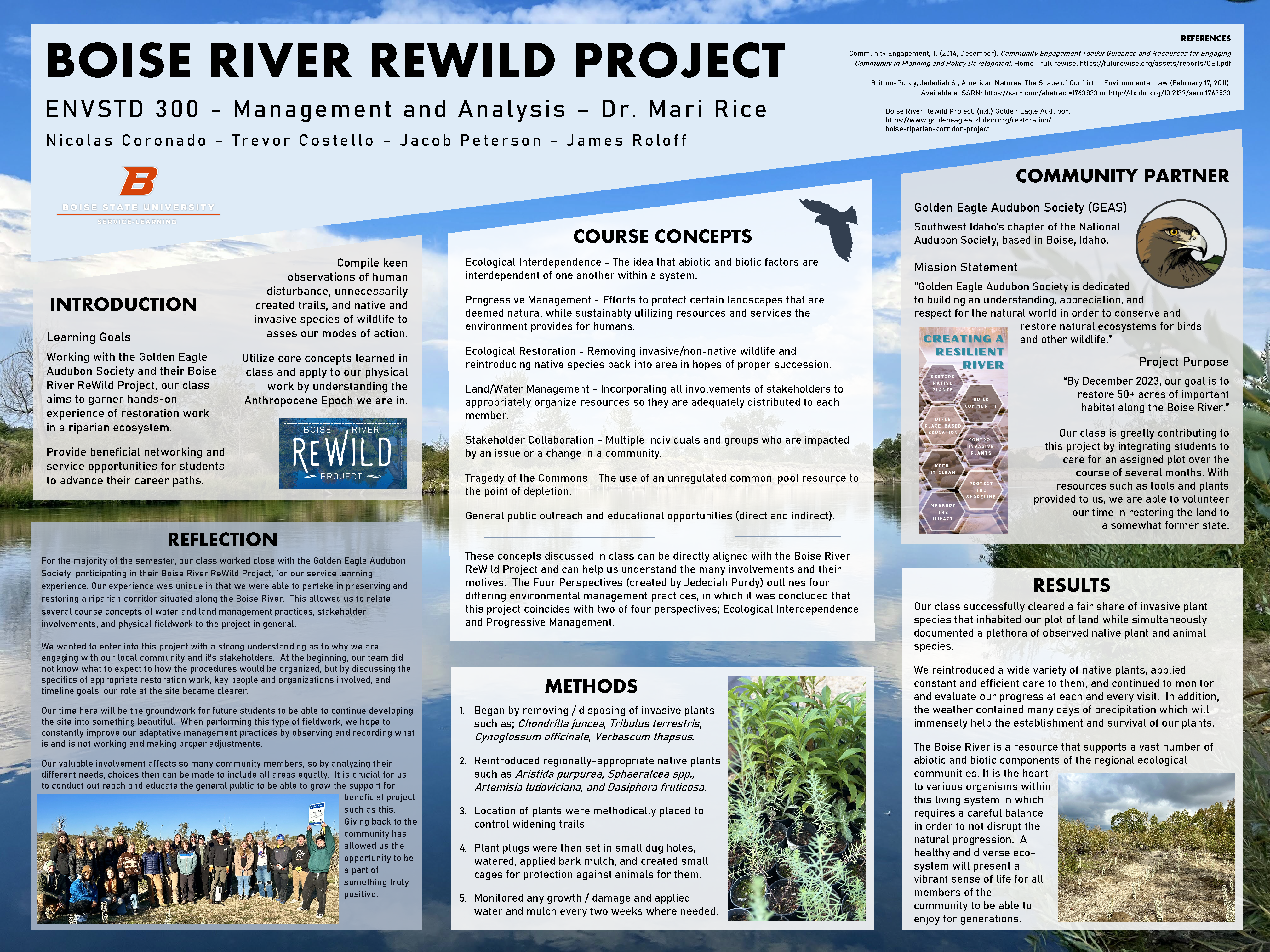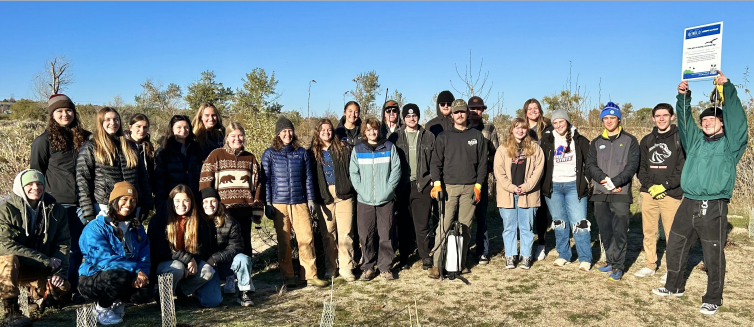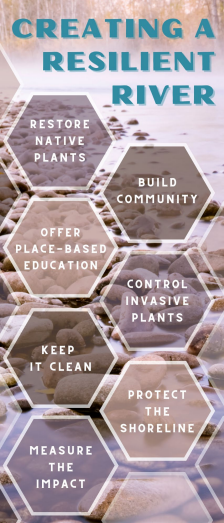Nicolas Coronado, Trevor Costello, Jacob Peterson, James Roloff
Mari Rice Ed.D – ENVSTD 300
Golden Eagle Audubon Society

Introduction
Learning Goals:
- Working with the Golden Eagle Audubon Society and their Boise River ReWild Project, our class aims to garner hands-on experience of restoration work in a riparian ecosystem.
- Provide beneficial networking and service opportunities for students to advance their career paths.
- Compile keen observations of human disturbance, unnecessarily created trails, and native and invasive species of wildlife to assess our modes of action.
- Utilize core concepts learned in class and apply to our physical work by understanding the Anthropocene Epoch we are in.
Reflection
For the majority of the semester, our class worked close with the Golden Eagle Audubon Society, participating in their Boise River ReWild Project, for our service leaning experience. Our experience was unique in that we were able to partake in preserving and restoring a riparian corridor situated along the Boise River. This allowed us to relate several course concepts of water and land management practices, stakeholder involvements, and physical fieldwork to the project in general.
We wanted to enter into this project with a strong understanding as to why we are engaging with our local community and its stakeholders. At the beginning, our team did not know what to expect to how the procedures would be organized but by discussing the specifics of appropriate restoration work, key people and organizations involved, and timeline goals, our role at the site became clearer.
Our time here will be the groundwork for future students to be able to continue developing the site into something beautiful. When performing this type of fieldwork, we hope to constantly improve our adaptive management practices by observing and recording what is and is not working and making proper adjustments.

Our valuable involvement affects so many community members, so by analyzing their different needs, choices then can be made to include all areas. It is crucial for us to conduct out reach and educate the general public to be able to grow the support for beneficial project such as this. Giving back to the community has allowed us the opportunity to be a part of something truly positive.
Community Partner: Golden Eagle Audubon Society
Mission Statement:
“Golden Eagle Audubon Society is dedicated to building an understanding, appreciation, and respect for the natural world in order to conserve and restore natural ecosystems for birds and other wildlife.”
Project Purpose/Community Identified Need:

“By December 2023, our goal is to restore 50+ acres of important habitat along the Boise River.”
Our class is greatly contributing to this project by integrating students to care for an assigned plot over the course of several months. With resources such as tools and plants provided to us, we are able to volunteer our time in restoring the land to a somewhat former state.
Course Concepts
Ecological Interdependence – The idea that abiotic and biotic factors are interdependent of one another within a system.
Progressive Management – Efforts to protect certain landscapes that are deemed natural while sustainably utilizing resources and services the environment provides for humans.
Ecological Restoration – Removing invasive/non-native wildlife and reintroducing native species back into area in hopes of proper succession.
Land/Water Management – Incorporating all involvements of stakeholders to appropriately organize resources so they are adequately distributed to each member.
Stakeholder Collaboration – Multiple individuals and groups who are impacted by an issue or a change in a community.
Tragedy of the Commons – The use of an unregulated common-pool resource to the point of depletion.
General public outreach and educational opportunities (direct and indirect).
Methods
- Began by removing / disposing of invasive plants such as; Chondrilla juncea, Tribulus terrestris, Cynoglossum officinale, Verbascum thapsus.
- Reintroduced regionally-appropriate native plants such as Aristida purpurea, Sphaeralcea spp., Artemisia ludoviciana, and Dasiphora fruticosa.
- Location of plants were methodically placed to control widening trails.
- Plant plugs were then set in small dug holes, watered, applied bark mulch, and created small cages for protection against animals for them.
- Monitored any growth / damage and applied water and mulch every two weeks where needed.
Results
Our class successfully cleared a fair share of invasive plant species that inhabited our plot of land while simultaneously documented a plethora of observed native plant and animal species.
We reintroduced a wide variety of native plants, applied constant and efficient care to them, and continued to monitor and evaluate our progress at each and every visit. In addition, the weather contained many days of precipitation which will immensely help the establishment and survival of our plants.
The Boise River is a resource that supports a vast number of abiotic and biotic components of the regional ecological communities. It is the heart to various organisms within this living system in which requires a careful balance in order to not disrupt the natural progression. A healthy and diverse eco-system will present vibrant sense of life for all members of the community to be able to enjoy for generations.